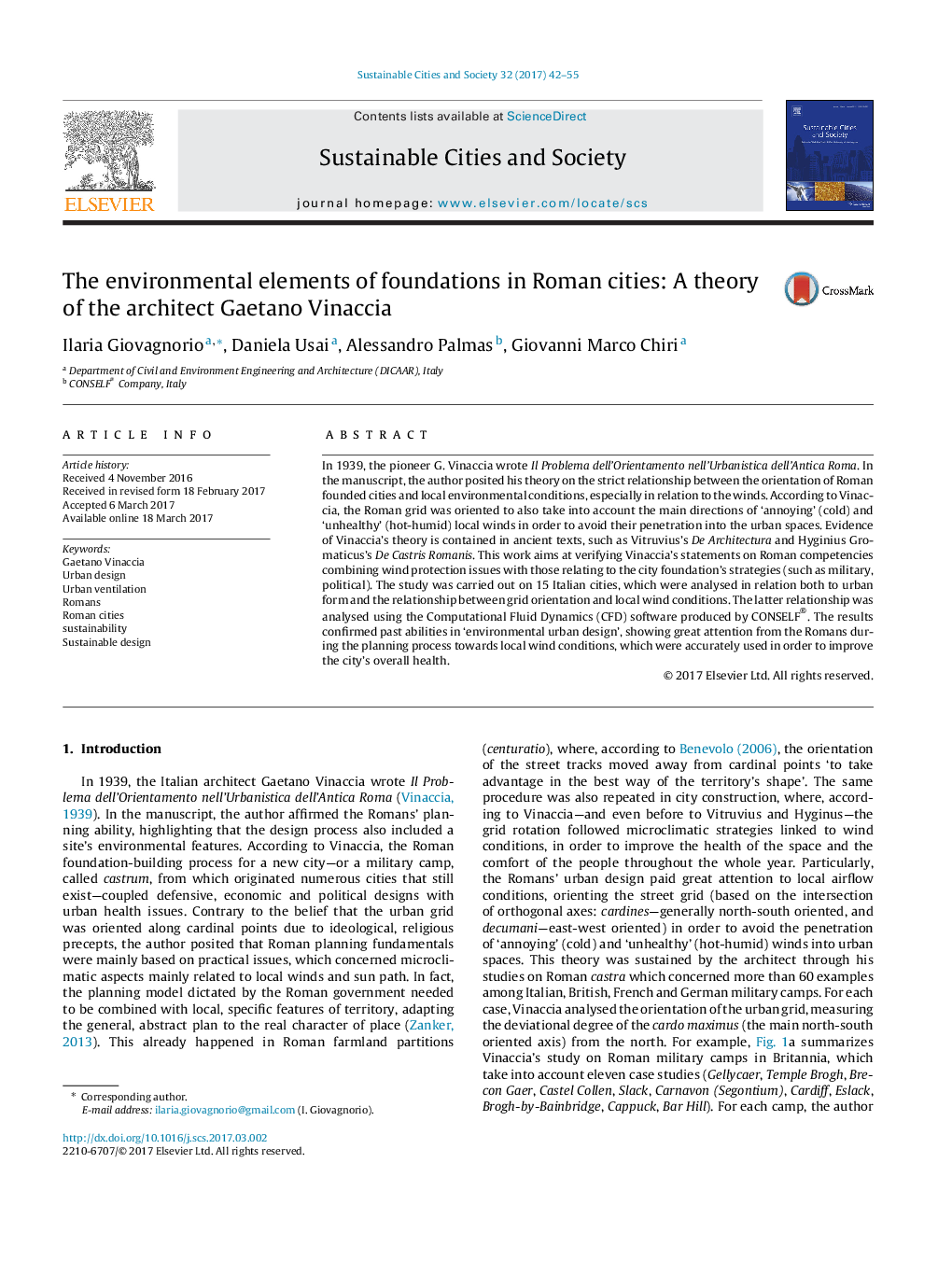| Article ID | Journal | Published Year | Pages | File Type |
|---|---|---|---|---|
| 4927992 | Sustainable Cities and Society | 2017 | 14 Pages |
Abstract
In 1939, the pioneer G. Vinaccia wrote Il Problema dell'Orientamento nell'Urbanistica dell'Antica Roma. In the manuscript, the author posited his theory on the strict relationship between the orientation of Roman founded cities and local environmental conditions, especially in relation to the winds. According to Vinaccia, the Roman grid was oriented to also take into account the main directions of 'annoying' (cold) and 'unhealthy' (hot-humid) local winds in order to avoid their penetration into the urban spaces. Evidence of Vinaccia's theory is contained in ancient texts, such as Vitruvius's De Architectura and Hyginius Gromaticus's De Castris Romanis. This work aims at verifying Vinaccia's statements on Roman competencies combining wind protection issues with those relating to the city foundation's strategies (such as military, political). The study was carried out on 15 Italian cities, which were analysed in relation both to urban form and the relationship between grid orientation and local wind conditions. The latter relationship was analysed using the Computational Fluid Dynamics (CFD) software produced by CONSELF®. The results confirmed past abilities in 'environmental urban design', showing great attention from the Romans during the planning process towards local wind conditions, which were accurately used in order to improve the city's overall health.
Related Topics
Physical Sciences and Engineering
Energy
Renewable Energy, Sustainability and the Environment
Authors
Ilaria Giovagnorio, Daniela Usai, Alessandro Palmas, Giovanni Marco Chiri,
